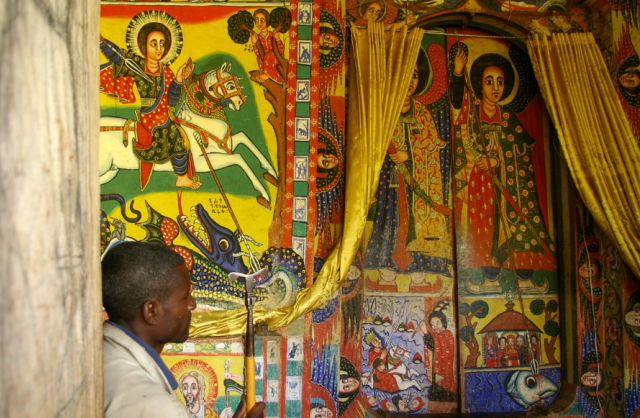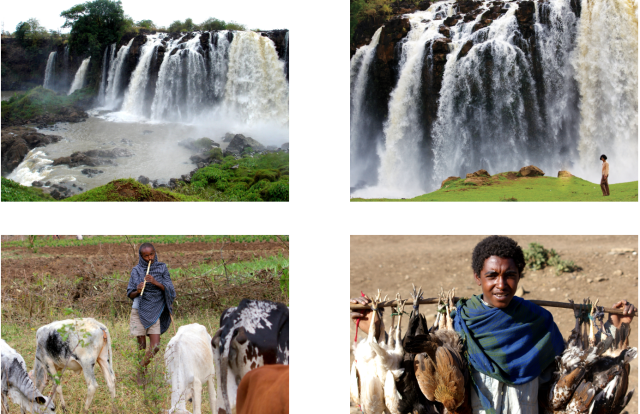 More than 20 of the world’s oldest monastic churches that date back to the 14th century are located on the peninsulas and islands of Ethiopia's Lake Tana. (Photo: Inside the 14th century Ura Kidane Mehret church/Forbes Africa)
More than 20 of the world’s oldest monastic churches that date back to the 14th century are located on the peninsulas and islands of Ethiopia's Lake Tana. (Photo: Inside the 14th century Ura Kidane Mehret church/Forbes Africa)
The Blue Nile pours out of Ethiopia’s Lake Tana as a gentle bubbling stream. Around is an ancient land with life-giving waters.
If one needs to be transported to biblical times, the time machine to do so resides on the banks of the Blue Nile in Ethiopia. This ancient land of many cultures and religions has resisted modernity, leaving many of its traditions intact, as I witnessed traveling through the historic Christian circuit of Ethiopia.
The mysterious Nile was long-hidden from Western geographers and explorers. It was not until the expeditions of such great travelers as Bruce, Burton, and Speke in the 18th century that the origins were confirmed: the White Nile originates in East Africa’s Lake Victoria, while the Blue Nile pours out of Ethiopia’s Lake Tana.

Photos: Forbes
It merges with the smaller tributary, the White Nile, at Khartoum, Sudan, to form the mighty Nile River.
The Blue Nile was responsible for the annual floods that contributed to the fertility of the Nile Valley and subsequent rise of the Egyptian civilization. This ended with the construction of the Aswan Dam in the 1960s in Egypt.
For my exploration, I started in Addis Ababa and flew into Bahir Dar, a clean, safe and well-maintained city (by African standards) and the closest approach to the Blue Nile.
It offers access to more than 20 of the world’s oldest monastic churches that date back to the 14th century, located on the peninsulas and islands of Lake Tana. I hired a boat that regularly plies Lake Tana to visit many of its churches and small villages.
—
Join the conversation on Twitter and Facebook.

























